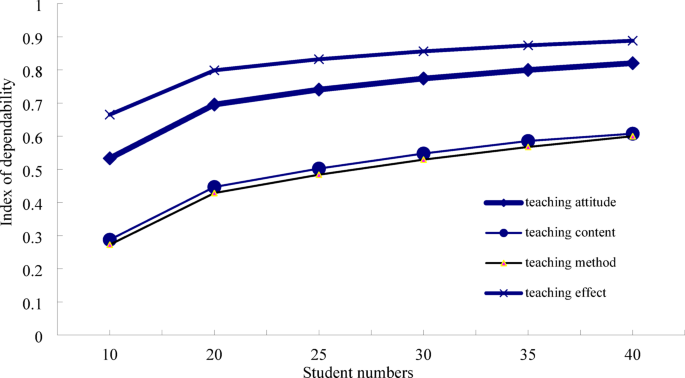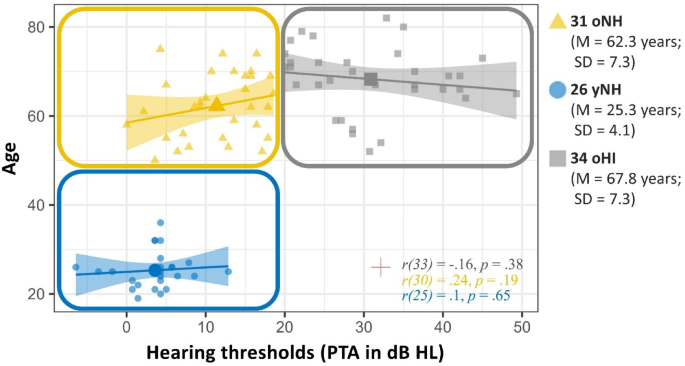Correlation between pain sensitivity and postoperative sleep disturbance in adult patients undergoing intestinal polypectomy under general anaesthesia: a prospective cohort study
Correlation between pain sensitivity and postoperative sleep disturbance in adult patients undergoing intestinal polypectomy under general anaesthesia: a prospective cohort study
- Correspondence to Professor Yan Li; 1249623003{at}qq.com
Postoperative sleep disturbance (PSD), a common clinical complication, can be influenced by various factors. This article aims to investigate the association between pain sensitivity and PSD in adult patients (<65 years old) undergoing elective intestinal polypectomy under general anaesthesia.
Nationwide register-based cohort study.
The First Affiliated Hospital of Shihezi University, Shihezi, 832003, China
A total of 246 patients undergoing elective intestinal polypectomy under general anaesthesia were selected from December 2023 to September 2024 (aged 18-64 years, about 59% men).
Athens Insomnia Scale (AIS) scores and sleep parameters, including sleep stages, efficiency, awakening times and sleep latency, were recorded one day before and after surgery.
A total of 246 adult patients (<65 years old) undergoing elective intestinal polypectomy under general anaesthesia were selected from December 2023 to September 2024. Preoperative pain sensitivity was assessed using quantitative sensory testing. The AIS was employed to evaluate the sleep quality of the patients before and after the operation. Additionally, a sleep monitor was used to record various sleep indicators of the patients on the night before and the first night after the operation, including sleep stages, efficiency, awakening times and sleep latency. Multivariate logistic regression analysis was performed to analyse the relationship between pain sensitivity and PSD.
Among the included patients who underwent elective intestinal polypectomy under general anaesthesia, 54 individuals (21.95%) developed PSD. Patients with high pain sensitivity had an increased risk of developing PSD (adjusted OR=2.789, 95% CI=1.020 to 7.628, p=0.046). In this study, logistic regression analysis using SPSS software identified three independent risk factors associated with PSD: pain sensitivity, presurgery sleep latency and the number of awakenings on the night before surgery. Receiver operating characteristic (ROC) curve analysis demonstrated that the areas under the curve for pain sensitivity grouping, sleep latency on the night before surgery and the number of awakenings on the night before surgery were 0.678, 0.656 and 0.645, respectively. According to ROC curve analysis, the areas under the curves of pain sensitivity, presurgery sleep latency and the number of awakenings on the night before surgery for PSD were all >0.5, but the diagnostic value of each factor alone was still low. The calibration curve for the combined model showed an area under the curve of 0.776, which was higher than the individual diagnostic factors.
In adult patients (<65 years old) undergoing elective intestinal polypectomy under general anaesthesia, the difference in pain sensitivity is associated with the occurrence of PSD, and patients with high pain sensitivity are prone to experiencing PSD.
Data are available upon reasonable request.
http://creativecommons.org/licenses/by-nc/4.0/
This is an open access article distributed in accordance with the Creative Commons Attribution Non Commercial (CC BY-NC 4.0) license, which permits others to distribute, remix, adapt, build upon this work non-commercially, and license their derivative works on different terms, provided the original work is properly cited, appropriate credit is given, any changes made indicated, and the use is non-commercial. See: http://creativecommons.org/licenses/by-nc/4.0/.
If you wish to reuse any or all of this article please use the link below which will take you to the Copyright Clearance Center’s RightsLink service. You will be able to get a quick price and instant permission to reuse the content in many different ways.
STRENGTHS AND LIMITATIONS OF THIS STUDY
Postoperative sleep disturbances are highly prevalent among surgical patients, characterised by reduced rapid eye movement sleep, increased awakening duration and fragmented sleep.1 These disorders have extensive and severe adverse effects, including exacerbation of postoperative pain and hyperalgesia,2 impairment of the immune system leading to an increased risk of infection and cancer progression and cognitive dysfunction, resulting in a higher incidence of postoperative delirium,3 4 as well as influences on cardiovascular function, psychomotor function and catabolic function,5 6 etc. Furthermore, the quality of postoperative sleep is closely associated with patient recovery.
The factors influencing PSD are multifaceted and intricate, encompassing age, surgical trauma, postoperative pain, anaesthetic drugs and techniques, ward environment and nursing activities,7–10 etc. The clinical attention devoted to sleep issues in postoperative patients is progressively increasing, with researchers exploring risk factors and attempting early intervention to expedite patient recovery. Therefore, it is imperative and highly valuable to conduct comprehensive research on the determinants of postoperative sleep quality as well as implement early prediction and management strategies.
Numerous previous studies have consistently demonstrated that inadequate sleep is associated with heightened pain sensitivity, and experimental sleep deprivation has been linked to increased pain sensitivity, as evidenced by comparisons of self-reported and quantitative sensory testing (QST) results.11 12 Currently, investigations are underway to explore the correlation between daytime pain sensitivity investigations, which are underway to explore the correlation QST of measurement, and sleep architecture in individuals with temporomandibular disorders. These studies have revealed that pain sensitivity and central sensitisation serve as predictors for a decreased proportion of rapid eye movement (REM) sleep, suggesting that this heightened pain perception may exacerbate overall sleep quality, thereby establishing a bidirectional feedback loop between disrupted sleep patterns and chronic pain.13 REM sleep may represent a putative mechanism between hyperalgesia and sleep. Reduced or fragmented REM commonly occurs in patients suffering from chronic pain, including pelvic pain, nocturnal low back pain and headache.14 Chronic pain can induce amplified pain sensitivity while also predisposing individuals to develop sleeping disorders. However, there exist interindividual variations in pain sensitivity, indicating that individuals lacking subjective experiences of acute or chronic pain exhibit distinct sensitivities to pain. Currently, no study has evaluated the relationship between the differences in pain sensitivity within such populations and the occurrence of PSD. Therefore, a dearth of relevant research exists exploring the relationship between pain sensitivity and postoperative patient sleep, leaving it uncertain whether heightened pain sensitivity directly contributes to the development of PSD under identical surgical conditions. The aim of this study was to investigate the correlation between patients’ pain sensitivity—assessed using QST—and both subjective and objective sleep monitoring indicators for postoperation, including the Athens Insomnia Scale (AIS) as well as sleep architecture, thereby providing a novel approach for clinically identifying risk factors associated with PSD.
As a prospective observational cohort study, no interventions were performed during surgery or general anaesthesia. The Science and Technology Ethics Committee of the First Affiliated Hospital of Shihezi University granted approval for this study on 1 December 2023(KJ2023-397-01). All patients voluntarily participated in the study and provided informed consent prior to surgery. This study adhered to the principles of the Declaration of Helsinki and has been registered in the Chinese Clinical Trial Registry (ChiCTR2300078614). The present manuscript follows the Strengthening the Reporting of Observational Studies in Epidemiology guidelines.
This study enrolled adult patients (<65 years old) who underwent elective intestinal polypectomy under general anaesthesia in our hospital (tertiary Grade A hospital in Xinjing, China) from December 2023 to September 2024. The inclusion criteria were as follows: (1) age ranging from 18 years to 64 years; (2) American Society of Anesthesiologists (ASA) grade I–III; (3) ability to cooperate with the assessment of various rating scales. The exclusion criteria included: (1) Pittsburgh Sleep Quality Index score >7 points indicating sleep disorder; (2) Hospital Anxiety and Depression Scale HADS-A >7 points or HADS-D >7 points indicating anxiety or depression; (3) Body mass index (BMI) >30 kg/m2; (4) complicated with severe diseases of vital organs (such as heart, brain, liver, kidney, etc); (5) continuous abuse of sedative, analgesic drugs, alcohol and other drugs known to affect sleep; (6) history of rheumatoid arthritis, central or peripheral nervous system diseases, skin ulcers, abnormal scar sensation and diseases that may affect pain perception before surgery; (7) history of cognitive impairment, mental or epileptic diseases; (8) complicated with sick sinus syndrome, severe bradycardia (<50 beats per minute) or atrioventricular block above second degree.
In this study, the incidence of PSD, judged by the AIS score, was used as the main observation index to calculate the sample size. In view of the absence of previous studies with the same design, only one known study reported that the incidence of sleep disturbance on the first postoperative day evaluated by AIS score during painless gastrointestinal endoscopy was 15%.15 30 patients were included in the preliminary pilot study. The incidence of PSD was 33.3% (5/15) in group H and 13.3% (2/15) in group L. Therefore, the incidence of PSD was estimated to be 30% in group H and 15% in group L. PASS V.15 software was used. The sample size of the two groups was calculated according to the ratio of 1:1. The test level was α=0.05, the test power was 1-β=0.8 and 118 cases were needed for each group (total 236 cases). If there were losses to follow-up, we estimated that 264 patients, 132 in each group, would need to be enrolled in this study, considering a loss rate of 10%.
Pain sensitivity refers to an individual’s capacity to perceive pain in response to nociceptive stimuli. This trait is regulated by both physiological and psychological factors and can be quantitatively assessed using objective measures (eg, pain threshold, tolerance threshold) and subjective ratings (eg, pain intensity scores). The preoperative QST for pain perception is scheduled from 10:00 to 13:00 on the day preceding surgery to minimise the potential influence of circadian rhythms on pain thresholds.16 The preoperative QST for pain perception encompasses electrical pain perception threshold (EPPT), electrical pain tolerance threshold (EPTT), acute pressure pain perception threshold (APPPT) and acute pressure pain tolerance threshold (APPTT). Patients must be thoroughly informed of the QST protocol to ensure understanding and cooperation. As the tenderness test is performed, the participant will feel a gradual increase in pressure on the middle finger of your right hand. The button was pressed immediately when the sensation began to ache (APPTT) and again when the pain became unbearable (APPTT). When the electrical pain threshold is measured, the participant receives brief electrical pulses of increasing intensity. The researcher was signalled when the sensation first changed to pain (EPPT) and reached a level that cannot be tolerated (EPTT). ‘Unbearable pain’ means that the participant cannot stand the pain for even a second. Trained researchers will conduct the tests following informed consent.
APPPT and APPTT are measured using a pressure algometer (JNT-CTY, Jinuotai Technology Development, Beijing, China), range of measurement 0–100 n, at the dorsal midpoint of the right middle finger. The APPPT is defined as the pressure at which the patient first perceives mild pain, recorded concurrently with a Visual Analogue Scale (VAS) score. The APPTT is determined by incrementally increasing pressure until the patient signals intolerable pain, at which point the test is terminated, and the pressure value is recorded. EPPT and EPTT are measured using an electrical stimulator (EP601C, East China Normal University Science and Education Equipment, China), range of measurement 0–5 mA. The anode, saturated with potassium chloride solution, is placed 10 cm proximal to the medial malleolus of the right leg. The EPPT is recorded as the current level at which the patient first perceives mild pain, accompanied by a VAS score. The EPTT is determined by increasing the current until the patient signals intolerable pain, at which point the test is terminated, and the current value is recorded.
Each patient undergoes two QST modalities for pain perception assessment, with each modality measured in triplicate. Pain sensitivity is determined by calculating the mean values of three acute pressure pain thresholds, electrical pain thresholds and corresponding VAS scores. The VAS scale ranged from 0 (no pain) to 10 (worst possible pain). Scores ≤3 indicate low pain sensitivity, while scores >3 indicate high pain sensitivity. A 15-minute interval is maintained between different QST modalities, and a 5-minute interval is observed for repeated measurements within the same modality.
Patients fasted for at least 8 hours and 2 hours preoperatively. Prior to surgery, the anaesthesiologist completed the preoperative evaluations and written informed consent forms. On entering the operating room, intravenous access was established immediately with continuous monitoring of vital signs, including non-invasive blood pressure, electrocardiography and peripheral oxygen saturation (SpO₂). Nasal cannula oxygen was administered at 4 L/min (preoxygenation for 2 min before anaesthesia induction).
Both patient groups received identical anaesthetic protocols: intravenous alfentanil (7 µg/kg) was administered first, followed 30 s later by remimazolam (0.2 mg/kg). Surgical procedures commenced after loss of eyelash reflex and when the Modified Observer’s Alertness/Sedation score reached ≤1. Intraoperative body movement or inadequate sedation was managed with supplemental remimazolam (0.04 mg/kg bolus). Respiratory depression (SpO₂ <90%) was treated immediately with jaw thrust or mask-assisted ventilation, progressing to endotracheal intubation if necessary. Haemodynamic parameters (heart rate (HR) and mean arterial pressure (MAP)) were maintained within 20% of baseline values. Deviations exceeding this range were initially managed with rapid crystalloid infusion (200 mL normal saline), with vasoactive agents (ephedrine 6 mg or phenylephrine 40 µg intravenously, depending on the HR) administered if unresponsive.
Following procedure completion, patients were transferred to the postanaesthesia care unit. The patient could leave the operating room and return to the ward accompanied by family members only if the patient was fully awake, haemodynamically stable: the fluctuation amplitude of MAP and HR remained within 20% of the baseline value before examination, no dizziness, nausea and vomiting and other discomfort symptoms occurred and the gait remained stable.
The AIS score was used for the assessment of PSD in patients. This validated and user-friendly questionnaire encompasses eight dimensions, including sleep onset time, nocturnal awakening, early awakening, total sleep time, overall sleep quality, daytime mood, daytime physical function and daytime sleepiness. The total score ranges from 0 to 24 points, with a diagnosis of insomnia indicated by a score of 6 or above. A higher score indicates poorer sleep quality. Meanwhile, a sleep monitor (KUN-DC1000, Hunan, China) was employed in this study to objectively evaluate various parameters such as sleep stage, sleep efficiency and sleep onset latency. The device is a non-contact sleep monitor based on ultra-wideband radar technology (operating frequency band 6.5–8.1 GHz). The outcome variables were evaluated and recorded by designated researchers who were independent from collecting any other explanatory variables to reduce researcher bias.
Potential predictors were selected based on a comprehensive review of the existing literature, clinical expertise and preliminary experiments. These included baseline data such as gender, age, BMI, medical history, educational level, intraoperative interventions and questionnaire responses. The researchers also evaluated the patients’ sleep status using the AIS. Additionally, the patient’s sleep status was assessed using the AIS with detailed instructions provided for self-assessment. No interventions were performed during the surgery and anaesthesia procedures without informing the surgeons and anaesthetists about their participation in this study.
After data collection, statistical analysis was performed using SPSS V.27.0 software. Normally distributed measurement data were presented as mean±SD and compared using an independent-samples t-test, while non-normally distributed data were represented by median and IQR and compared using the Mann-Whitney test. Categorical data were reported as frequency (n) and percentage (%) and analysed using the χ2 or Fisher’s exact test as appropriate. Variables demonstrating statistical significance (p<0.05) in univariate analysis were selected as candidates for multivariate analysis. After conducting stratified analysis to control for potential confounding factors and excluding specific variables, the remaining factors were incorporated into a multivariate logistic regression model for final analysis. Logistic regression analysis was employed to examine correlations between variables. A two-tailed approach was used for all significance tests, with a significance level of p<0.05.
No patients or members of the public were involved in the design, conduct or dissemination of this study.
A total of 257 patients who declined participation, 403 patients with pre-existing sleep disturbance and/or anxiety disorders, 70 patients with pain perception disorder diseases and 10 patients unable to complete the scale assessment due to dementia or other factors were excluded from this study. No dropouts occurred during the study period, ensuring no loss of data. Eventually, a cohort of 246 patients was included in the analysis, as depicted in figure 1. All enrolled patients were of Han ethnicity. We collected demographic data for all patients, as shown in table 1. Briefly, among all the patients, 54 patients (21.95%) developed PSD. No statistically significant differences were observed between the PSD and non-PSD groups regarding age, BMI, ASA classification, medical history and education level (p>0.05). Among patients with PSD, a significantly higher proportion exhibited high pain sensitivity (77.80%) compared with those with low pain sensitivity (22.20%, p<0.001). Moreover, the incidence of PSD was significantly higher in women (64.80%) than in men (35.20%).
Table 1
Participant characteristics of the Non-PSD Group and PSD Group
Table 2 displays the sleep quality and pain sensitivity metrics for both groups on the night before and after surgery. Compared with the non-PSD group, the PSD group demonstrated poorer overall sleep quality both presurgery and postsurgery. The AIS scores were higher, the duration of deep sleep stage was shorter, sleep efficiency was lower, the frequency of awakenings was greater and sleep latency was longer. These differences were statistically significant (p<0.05). There were notable differences in pain sensitivity indicators between the two groups. Compared with the non-PSD group, the VAS scores were higher in the PSD group, while the mean values of APPPT, APPTT, EPPT and EPTT were all lower. These differences were all statistically significant (p<0.05).
Table 2
Sleep and pain sensitivity characteristics in two groups
The intraoperative and postoperative characteristics are summarised in table 3. Compared with the non-PSD group, the PSD group exhibited a significantly shorter duration of surgery and fewer additional administrations of anaesthetic drugs (p<0.05). No statistically significant differences were observed between the two groups regarding anaesthesia recovery time, physician qualifications or the sleep status between postoperative and presleep monitoring (p>0.05).
Table 3
Intraoperative and postoperative characteristics of the two groups
The results of the univariate analysis clearly demonstrate significant differences between the two groups in terms of pain sensitivity grouping, gender, sleep quality (including light sleep stage, deep sleep stage, sleep efficiency, number of awakenings, sleep latency), duration of surgical operation and the number of additional administrations of anaesthetic drugs. These differences are statistically significant (p<0.05) and may serve as influencing factors of PSD, as indicated in tables 1–3.
A multivariate logistic regression analysis was performed on the aforementioned potential influencing factors to investigate the association between pain sensitivity and PSD (PSD). The results indicated that pain sensitivity classification, the frequency of nighttime awakenings the night before surgery and the duration of sleep latency the night before surgery are independent predictors of PSD, all exhibiting a positive correlation. The ORs are 2.789 (95% CI: 1.020, 7.628), 1.925 (95% CI: 1.039, 3.566) and 1.078 (95% CI: 1.021, 1.139) respectively, as illustrated in figure 2. The impacts of pain sensitivity grouping, the number of awakenings on the night before surgery and the length of sleep latency on the night before surgery on PSD are as follows: (1) patients with high pain sensitivity have a 2.789-fold increased likelihood of developing PSD compared with those with lower pain sensitivity; (2) for each additional awakening on the night before surgery, there is a 1.925-fold increase in the risk of PSD; (3) each additional minute of sleep latency the night before surgery corresponds to a 1.078-fold increase in the risk of PSD. The results of the receiver operating characteristic (ROC) curve are shown in figure 3. The area under the curve (AUC) values for pain sensitivity grouping, the number of awakenings on the night before surgery and the length of sleep latency on the night before surgery are 0.678 (95% CI: 0.600 to 0.756, p<0.0001), 0.645 (95% CI: 0.565 to 0.725, p<0.01), and 0.656 (95% CI: 0.566 to 0.747, p<0.001), respectively. According to ROC curve analysis, the areas under the curves of pain sensitivity, pre-surgery sleep latency, and the number of awakenings on the night before surgery for PSD were all >0.5, but the diagnostic value of each factor alone was still low. The calibration curve for the combined model showed an AUC of 0.776, which was higher than the individual diagnostic factors.
The results of this study demonstrated a significant positive correlation between heightened pain sensitivity and an increased risk of PSD in adult patients (<65 years old) undergoing elective intestinal polypectomy under general anaesthesia, indicating that increased pain sensitivity is associated with PSD. Logistic regression analysis revealed that the pain sensitivity grouping, the frequency of nighttime awakenings the night before surgery and the duration of sleep latency the night before surgery are independent predictors of PSD. These three factors can effectively predict the occurrence of PSD. Compared with the non-PSD group, patients in the PSD group generally exhibited poorer preoperative sleep quality and higher pain sensitivity. This underscores the importance for healthcare providers to closely monitor the patients’ preoperative sleep quality and pain sensitivity, as they may be the early warning signs of the onset of PSD.
A study on patients with temporomandibular disorders revealed that those with higher pain sensitivity and central sensitisation exhibited a lower proportion of REM sleep in their sleep structure.17 The reduction or fragmentation of REM sleep is frequently observed in patients with chronic pain, such as pelvic pain, nocturnal low back pain and headache.14 Chronic pain can exacerbate pain sensitivity and predispose individuals to sleep disturbances. Previous studies have confirmed that pain can induce PSD.18 Conversely, the subjects in this study reported no subjective feelings of acute or chronic pain before surgery and experienced minimal pain postoperatively, thereby minimising the confounding effects of pain on the experimental outcomes. It is known that individual variations in pain sensitivity are well-documented,19 so we simply explored whether these differences correlate with the incidence of PSD. At present, no relevant studies have definitively linked the two. The potential mechanisms of high pain sensitivity and PSD primarily encompass two aspects: on the one hand, pain sensitivity is related to the expression of the catechol-O-methyltransferase gene (COMT). In individuals with heightened pain sensitivity, the activity of the COMT enzyme is weak and the level of catecholamines in the brain is high.20 21 Catecholamines, which act as excitatory neurotransmitters, play an important role in initiating and maintaining wakefulness. For example, dopamine activates the dopamine D1 receptors in the nucleus accumbens, leading to a reduction in non-REM (NREM) sleep and REM sleep.22 Norepinephrine stimulates the alpha 1 and beta receptors in the paraventricular nucleus of the thalamus, contributing to wakefulness.23 24 Therefore, patients with high pain sensitivity are more susceptible to developing PSD due to the binding of catecholamines to the receptors of wake-promoting nuclei, which activates the arousal pathway. On the other hand, in healthy individuals with high pain sensitivity, the activation frequency of the prefrontal cortex of the brain significantly increases after being stimulated by non-noxious stimuli.25 The prefrontal cortex is interconnected with the subcortical wake-promoting nuclei to control the wakeful state.26 Postoperatively, patients with high pain sensitivity are prone to activating the brain’s wake-promoting system due to the heightened responsiveness of the prefrontal cortex and thus are likely to experience sleep disturbance.
Previous investigations have demonstrated that the prevalence of PSD in Chinese female outpatient patients (671/2896, 23.2%) is significantly higher than in male outpatient patients (302/1503, 20.1%).27 This finding has been corroborated in this experiment. This difference may be due to the fact that women have heightened sensitivity to environmental factors and a lower tolerance threshold for discomfort. Therefore, female perioperative patients are more likely to experience negative emotions such as aversion, anxiety and fear, which exacerbate the risk of PSD.28 Medical staff should pay attention to female patients during the perioperative period, especially those with preoperative anxiety. Early psychological counselling and psychosocial support are essential for alleviating patients’ emotional distress and preventing PSD. In this study, compared with the non-PSD group, the PSD group exhibited poorer preoperative sleep quality, characterised by higher AIS scores, shorter periods of deep sleep on the night before surgery, lower sleep efficiency, increased awakenings and longer sleep latency; among them, the number of awakenings on the night before surgery and the sleep latency time can serve as independent predictors of PSD. Although the study subjects were not diagnosed with sleep disturbance before surgery, the AIS scores and sleep monitoring indicators suggest that patients with poorer preoperative sleep quality are at a higher risk of developing PSD after surgery. This result is consistent with previous research.29 30 Patients with poor preoperative sleep quality may already exhibit psychological issues such as psychological anxiety. After surgery, due to stress factors such as surgical trauma, their psychological burden can be further exacerbated. Additionally, an amplified stress response, heightened immune-inflammatory reactions and increased pain sensitivity may predispose these patients to sleep disturbances. Consequently, during the perioperative period, timely interventions should be provided to patients with preoperative sleep problems to prevent the worsening of sleep quality or the onset of PSD.
Although the prediction model in this study had moderate discrimination (AUC 0.645–0.678), indicating that the diagnostic value of a single indicator was still low, the area under the ROC curve of the combined three indicators was 0.776, which was higher than that of a single indicator. Therefore, preliminary findings suggest that preoperative pain sensitivity, light sleep duration and sleep onset latency jointly increase the risk of PSD. Patients with elevated preoperative pain sensitivity, prolonged light sleep and delayed sleep onset have increased susceptibility to PSD. Current predictive performance, although limited in independent risk stratification, pain sensitivity can be used as a viable initial screening measure, especially in resource-limited settings, to identify high-risk subgroups that require a comprehensive evaluation. Future studies should integrate multidimensional risk factors, including pain sensitivity measures, into PSD prediction models to enhance perioperative PSD risk identification. According to the current research results, the ability of preoperative sleep indicators to predict PSD is limited, but studies have shown that preoperative sleep disturbance is one of the main risks of PSD.30 Therefore, the occurrence of PSD can be effectively prevented by improving the quality of preoperative sleep.
The findings identify pain sensitivity as a significant contributor to PSD, prompting the proposal of preventive intervention strategies. For patients with high pain sensitivity, preoperative and postoperative sleep monitoring may facilitate early PSD detection, while preemptive COX-2 inhibitor administration could mitigate peripheral and central prostaglandin synthesis, thereby reducing pain sensitivity. Given the association between elevated catecholamine levels and heightened pain sensitivity, adjunctive α2-adrenergic agonists may further modulate catecholaminergic hyperactivity. In patients with poor preoperative sleep, sleep hygiene education (eg, caffeine reduction, fixed bedtimes) and short-term use of melatonin receptor agonists—which improve sleep latency, efficiency and total duration—should be prioritised. These preliminary strategies underscore prevention over treatment; however, future studies are warranted to develop personalised approaches tailored to pain-sensitive individuals.
Although this study prospectively collected data at a single tertiary care centre, it should be acknowledged that regional variations in medical resources (eg, analgesia protocols, nursing ratios) and patient lifestyles (eg, dietary habits, circadian rhythms) may influence pain sensitivity and PSD incidence. For instance, socioeconomic disparities in access to preoperative sleep counselling or cultural attitudes towards pain expression could confound results. Future multicentre studies should stratify analyses by geographic location and ethnicity to enhance generalisability.
This study has several limitations. First, the risk factors for PSD are extremely complex, and additional factors require further investigation to accurately predict PSD prognosis. Second, this study was conducted at a single centre. Compared with retrospective studies, the prospectively collected clinical data in our study exhibit greater consistency and reliability. To our knowledge, this represents the first investigation examining the correlation between pain sensitivity and PSDs. A multicentre design will be employed to increase sample size and ensure the broader applicability of our results. Third, the current study did not include direct assessment of central sensitisation (eg, dynamic allodynia or temporal summation). Although preoperative QST provides insights into peripheral sensitisation, future studies should incorporate measures of central mechanisms to better understand their role in PSDs. Additionally, due to the complexity of monitoring, especially in large-scale trials, polysomnography and electroencephalography were not used to analyse the sleep quality of patients.
This study identified that pain sensitivity, sleep latency and the number of awakenings on the night before surgery as clinically significant predictors of PSD in adult patients (<65 years old). This study is the first to demonstrate that even in patients without pre-existing pain conditions, individual differences in pain sensitivity may contribute to PSDs. These results suggest that preoperative assessment of pain sensitivity could facilitate early identification of patients at high risk for PSDs and help to develop personalised intervention strategies to reduce the incidence. Future research should: (1) validate these findings in larger, more diverse surgical cohorts; (2) investigate the neurobiological mechanisms linking pain sensitivity to sleep dysregulation using polysomnography and functional neuroimaging; and (3) develop clinical algorithms integrating pain sensitivity metrics with other known risk factors to optimise perioperative care pathways.
Data are available upon reasonable request.
Not applicable.
This study involves human participants and was approved by the Science and Technology Ethics Committee of the First Affiliated Hospital of Shihezi University (KJ2023-397-01). Participants gave informed consent to participate in the study before taking part.









